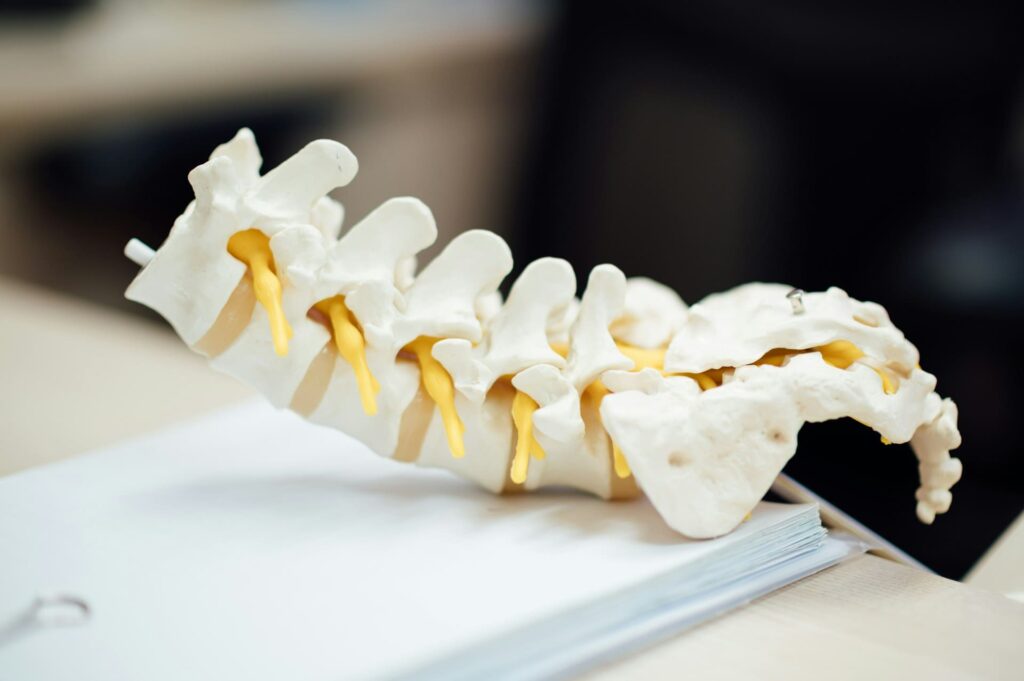The osteopathy has become a popular choice among complementary therapies for the treatment of pain and other musculoskeletal disorders. However, there are differing opinions and some debate about disinformation The safety of these treatments raises doubts and concerns among potential patients. If you are wondering whether it is dangerous to go to an osteopathread this article dedicated to comprehensively address the security and public perception of the osteopathyThe report also includes an analysis of the potential benefits as well as the potential risks.
Our intention is to debunking myths and provide information evidence-based about osteopathic practice, focusing on the safety and efficacy of its methods. We want to ensure that all readers, whether current or prospective patients, have access to clear and accurate information to enable them to make informed decisions regarding their health and well-being.
For more detailed information and additional resources on osteopathy and how it can help various conditions, we invite you to visit our homepage at Malecot Osteopathy Barcelona.
This holistic approach will not only help to clarify doubts, but will also contribute to raising the general understanding of how osteopathy can be safely and effectively integrated into people's healthcare plans.
What is osteopathy?
The osteopathy is a discipline of complementary medicine that focuses on the diagnosis, treatment and prevention of a variety of health disorders, using a holistic approach. It not only treats specific symptoms, but seeks to improve overall health by optimising the functioning of all body systems through manual techniques.
Brief history of osteopathy
Osteopathy was founded in 1874 by the American doctor Andrew Taylor Stillwho believed in the body's ability to self-care and the importance of a healthy musculoskeletal system for overall health. Since then, osteopathy has evolved and expanded globally, adapting to medical and scientific advances, but always maintaining its principles of integrity and holism.
Fundamental principles of osteopathic practice
The principles of osteopathy are focused on the unity of the human bodyThe interrelationship between structure and function, and the body's innate capacity for self-healing. The osteopaths use a holistic approach to assess and treat patients, which may include manipulations of the spine, joints and soft tissues, as well as specific techniques to improve circulation and support the nervous and lymphatic system.
Training and regulations of osteopaths
Osteopaths are highly trained health professionals who complete rigorous and extensive university education programmes. In many countries, osteopaths must be registered and meet strict regulations to ensure their competence and safety in practice. In addition, continuing education is a requirement to maintain licensure and ensure that osteopathic practice remains safe and effective.
This approach ensures that all who choose osteopathy receive safe, personalised care based on the most up-to-date knowledge and ethical practices.
Is it dangerous to go to an osteopath? Common concerns about the safety of osteopathy
Exploring the general concerns of the public
One of the most common concerns The public's misconceptions about osteopathy relate to the safety of manipulative techniques, especially those involving the spine and joints. Some people fear that these treatments may cause additional pain or injury. However, scientific evidence and well-regulated clinical practice show that, when performed by trained and licensed practitioners, these techniques are safe and effective.
Another common concern is the effectiveness of osteopathy in the treatment of certain medical conditions. Although osteopathy is not intended to replace conventional medical care in cases where specific medical interventions are required, it has been shown to be a valuable complementary therapy in pain management, improving mobility and promoting overall health.
Discussion of common myths and where they might originate
The myths surrounding osteopathy often originate from a lack of understanding about what an osteopath is and how an osteopath works. For example, the myth that all osteopathic treatments involve cracking is common, but the reality is that the techniques used are varied and many of them are very gentle.
In addition, the rise in popularity of alternative medicine has led some untrained individuals to offer osteopathic-like services, which can lead to negative experiences that do not reflect the legitimate and professional practice of osteopathy.
Consultation with the myths and realities of osteopathyto have an educational and evidence-based perspective on the issue.
By addressing these concerns and demystifying misconceptions, we seek to reinforce confidence in osteopathy as a safe and effective option for those seeking a more holistic approach to managing their health.
Assessment of the risks associated with osteopathy
Detailed analysis of possible risks in osteopathic treatments
Although the osteopathy is considered safe when performed by qualified professionals, like any medical or therapeutic treatment, it carries certain risks. These risks are generally low compared to more invasive procedures, but it is essential to be informed. Some of the risks associated with osteopathic treatments may include minor post-treatment discomfort, mild headaches or fatigue. Rarely, specific techniques, especially if not performed correctly, may cause injury.
Most adverse effects associated with osteopathy are mild and transient. Osteopaths are trained to assess patients individually and apply techniques that minimise risk, tailoring each treatment to the patient's needs and conditions.
Comparison with other forms of non-invasive treatment
When compared to other forms of non-invasive treatments, such as physiotherapy or massage, osteopathy maintains a similar or even lower risk profile. For example, while treatments such as injections or orthopaedic surgery carry significant risks of infection, adverse reactions to anaesthetics or post-operative complications, osteopathy, which does not use drugs or surgical procedures, avoids many of these risks.
To understand more about how osteopathy compares to other treatment modalities in terms of safety and effectiveness, please visit this document from the Federation of Osteopaths of Spain (FOE) where experts discuss evidence in the field of osteopathy.
Through this analysis, it can be seen that osteopathy offers a safe and effective alternative, especially for those seeking to minimise their exposure to invasive treatments and the side effects of medication. In the context of complementary and alternative medicine, osteopathy stands out for its gentle and respectful approach to restoring function and promoting general health and wellbeing.
Benefits of osteopathy
List of scientifically validated benefits of osteopathy
The osteopathy offers multiple benefits that have been validated through scientific studies and clinical practice over the years. One of the main benefits is the improvement in the mobility and flexibility of the body, which can lead to a significant reduction of musculoskeletal pain. In addition, osteopathy helps to optimise blood circulation and lymphatic system, which is essential for recovering from injuries and maintaining optimal health.
Another important benefit is their ability to influence the autonomic nervous systemhelping to manage stress and improving stress-related conditions such as insomniaanxiety and certain types of headaches. Osteopathy can also be effective in the treatment of chronic conditions, such as arthrosis y digestive problemsThe new treatment offers considerable relief and improves the quality of life of the patients.
Testimonials and case studies on positive results
Numerous patient testimonials and case studies highlight the positive effects of osteopathy. Patients with chronic pain who had not found relief from conventional treatments often report significant improvements after receiving osteopathic treatments. These cases reflect how osteopathy can be tailored to individual needs to treat not only the symptoms, but also the underlying causes of various conditions.
Osteopathy not only treats specific physical problems, but also contributes to improving general well-being, proving to be a valuable therapeutic option within the field of alternative and complementary medicine.
Criteria for choosing a qualified and certified osteopath
To ensure a safe and effective visit to the osteopath, it is crucial to select a practitioner who is properly qualified and certified. Patients should verify that the osteopath has completed an accredited training programme and is licensed to practice. It is advisable to choose practitioners who are members of recognised associations, which ensures that they meet rigorous ethical and professional standards. In addition, a good osteopath should continually participate in continuing education to keep up to date with the latest practices and techniques.
Importance of open communication with the osteopath about your health and concerns
A open and transparent communication is critical to maximising the benefits and minimising the risks of any osteopathic treatment. Patients should feel comfortable to discuss their full medical histories, as well as any symptoms or concerns they have. This will allow the osteopath to tailor treatment to the patient's specific needs and avoid techniques that may not be appropriate due to pre-existing conditions.
Warning signs to recognise unprofessional practice
It is vital to be alert to certain warning signs that may indicate unprofessional osteopathic practice. These include lack of transparency about training and credentials, guarantees of immediate results, excessive use of manipulative techniques without adequate evaluation, or disinterest in patient questions or concerns. If an osteopath suggests abandoning other necessary medical treatments or does not respect the patient's decisions, these are also indicative of questionable practice.
Adopting a cautious and well-informed approach can help ensure that the osteopathic experience is positive and beneficial, maximising therapeutic benefits while minimising potential risks.
Regulations and standards in osteopathy
Description of the national and international regulations governing the practice of osteopathy
The practice of osteopathy is regulated by a number of national and international regulations that ensure the quality and safety of treatments offered to patients. These regulations vary from country to country, but generally include stringent education and licensing requirements, as well as ethical and professional standards that must be met by practitioners.
In many countries, national osteopathic associations set standards for training and continuing practice, ensuring that osteopaths are well equipped to provide high-quality care. Internationally, organisations such as the International Federation of Osteopathy (FIO) work to harmonise standards and promote a common regulatory framework to support the profession globally.
How these regulations protect the patient
The regulations are primarily aimed at protecting the patient by ensuring that only properly trained and qualified practitioners can provide osteopathic treatment. This minimises the risk of malpractice and increases the likelihood of positive treatment outcomes.
These regulations also provide a system of accountability, where patients can feel confident that any breach of standards by an osteopath will be properly investigated and sanctioned. In addition, these regulations make it easier for patients to have access to transparent information about the treatments they receive, enabling them to make informed decisions about their healthcare.
Adhering to these standards not only enhances confidence in osteopathy as a viable treatment option but also strengthens the reputation of the profession, ensuring that it is recognised as a serious medical discipline based on rigorous principles of care and ethics.
Osteopathy compared to other treatment practices
Comparison of the safety of osteopathy with alternative and conventional treatments
The safety of osteopathy is often considered superior to many alternative and some conventional forms of treatment, especially in the context of musculoskeletal conditions and stress-related problems. Unlike conventional medical treatments that may involve surgery or drugs with potentially severe side effects, osteopathy offers a non-invasive approach that minimises exposure to these risks.
For example, compared to spinal surgery, osteopathy does not present risks of postoperative complications, such as infections or reactions to anaesthesia. Furthermore, unlike some pharmacological treatments, osteopathy does not involve risks related to drug dependency or long-term side effects.
It is not dangerous to go to an osteopath : relative advantages and disadvantages from a safety perspective
From a security perspective, one of the main advantages of osteopathy is its holistic and personalised approach, which considers not only the patient's physical symptoms but also their general wellbeing and lifestyle. This often results in a more holistic treatment plan that can prevent the recurrence of problems, rather than simply treating symptoms in isolation.
However, a potential disadvantage is that, being less well known than some conventional forms of treatment, patients may not be fully aware of what an osteopathic session involves and how to prepare for it or what to expect in terms of results. In addition, the effectiveness of osteopathy may vary depending on the specific case and the skill of the osteopath.
In summary, osteopathy stands out as a safe and effective treatment option, especially for those who prefer a less invasive and more holistic approach to the management of pain and other health problems.
Answers to common questions about the safety and efficacy of osteopathy
Doubts about the osteopathy are common among those considering this form of treatment for the first time. Here we address some of the most frequently asked questions to clarify concepts and ensure that patients have the information they need to make informed decisions about their health.
Is osteopathy dangerous?
Osteopathy is generally safe when performed by a qualified and certified practitioner. The associated risks are minimal compared to more invasive treatments such as surgery. However, it is crucial to ensure that the osteopath is properly trained and registered with a recognised professional association.
What are the benefits of osteopathy for herniated discs?
Osteopathy can relieve pain and improve mobility in people with herniated discs through techniques that help reduce pressure on the affected discs, improve spinal alignment and increase intervertebral space. This facilitates natural recovery and may prevent the need for more aggressive interventions.
What are the reasons to treat with an osteopath?
Many patients choose osteopathy for its holistic and non-invasive approach to treating pain and other musculoskeletal problems. It is effective in improving overall quality of life, reducing stress and increasing the body's ability to heal itself.
What is osteopathy?
Osteopathy is a form of manual medicine that focuses on the diagnosis, treatment and prevention of disorders of the musculoskeletal system and their impact on general health. It uses manual techniques to improve circulation and correct altered alignment, without the use of drugs or surgery.
What are the risks of going to an unqualified and untrained osteopath?
Seeing an osteopath without proper credentials can increase the risk of ineffective or even harmful treatments. It is vital to check qualifications and ensure that the osteopath is registered with a recognised professional body.
What is "neck snapping" and why is it dangerous?
"Neck crunching" refers to manipulative techniques that can produce a crunching sound due to the release of gas in the neck joints. While it is a common technique in osteopathy, it should only be performed by trained professionals, as incorrect application can lead to complications such as injury to blood vessels or nerves.










